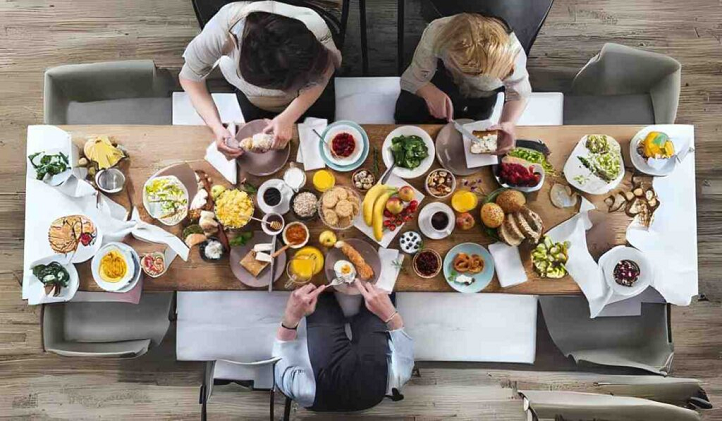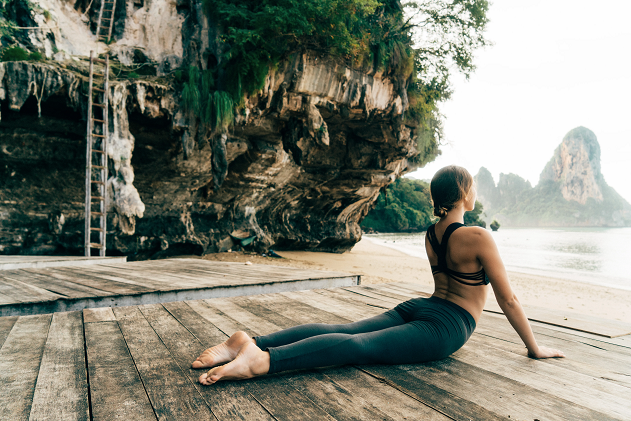Move Make Food Fitness Travel Lifestyle: The Six Pillars of a Balanced and Fulfilled Life

Move make food fitness travel lifestyle in our busy modern world, achieving a truly balanced life may seem daunting. Yet, when we break it down into six key pillars move, make, food, fitness, travel, and lifestyle it becomes much more attainable. These pillars are the foundation of a healthy, happy, and well-rounded existence, and they work synergistically to improve not only our physical health but also our mental, emotional, and social well-being.
The key to leading a fulfilling life is integrating these six elements in a way that suits your personal needs, preferences, and goals. In this article, we will explore each pillar in depth and provide practical advice on how to incorporate them into your routine. Whether you’re just beginning your wellness journey or looking to refine your move make food fitness travel lifestyle this guide will give you the tools to live a balanced, enriching life.
Move: The Importance of Physical Movement
Movement is the cornerstone of physical health and well-being. It is essential for maintaining a healthy body and mind. The human body was designed for movement, and our sedentary lifestyles often prevent us from reaching our full potential. Movement isn’t limited to intense exercise; it can be as simple as walking, stretching, or dancing.
The Impact of Movement on Health
Physical movement has a profound impact on our health, affecting everything from circulation to metabolism and mental health. Regular movement helps:
- Improve Cardiovascular Health: Activities like walking, running, cycling, and swimming strengthen the heart and improve blood circulation.
- Build Muscle and Strength: Strength training or bodyweight exercises like squats and push-ups can enhance muscle mass, which in turn supports metabolism.
- Boost Mental Clarity and Mood: Exercise triggers the release of endorphins, which are chemicals in the brain that make us feel happier and reduce stress.
- Support Flexibility and Mobility: Stretching, yoga, and Pilates improve flexibility, which can prevent injuries and promote better posture.
Incorporating Movement into Daily Life
The great news is that you don’t need to commit hours at the gym to reap the benefits of movement. Here are some ways you can integrate movement into your daily routine:
- Walking or Cycling: Consider walking or cycling to work, taking the stairs instead of the elevator, or simply taking a walk during lunch breaks.
- Stretching or Yoga: Take five minutes in the morning or before bed to stretch. Yoga can also be an excellent way to relieve tension and improve flexibility.
- Dance: Put on your favorite music and dance around the house. This is a fun, easy way to get your body moving while boosting your mood.
- Strength Training: Try bodyweight exercises such as squats, lunges, push-ups, and planks to improve strength without the need for gym equipment.
Table 1: Types of Movement and Their Benefits
| Type of Movement | Key Benefits | Best For |
|---|---|---|
| Walking | Boosts cardiovascular health, low-impact | Beginners, older adults |
| Running/Cycling | Endurance, cardiovascular fitness | Fitness enthusiasts |
| Yoga | Flexibility, stress relief, mindfulness | Mind-body connection |
| Strength Training | Muscle building, metabolism boost, bone density | Strength and endurance |
| Dancing | Cardiovascular health, fun, coordination | Social, stress relief |
Make: Creative Expression and Its Benefits

Making things with your hands or mind is a crucial part of self-expression and emotional well-being. Whether you’re painting, writing, cooking, or engaging in some other form of creative activity, creating something can bring immense satisfaction and a sense of accomplishment.
The Psychological and Emotional Benefits of Creativity
Creativity is a powerful tool for improving mental health. Research shows that engaging in creative activities helps:
- Reduce Stress: The process of creating allows the mind to focus, helping to temporarily escape stressors.
- Enhance Self-Esteem: Completing a creative project provides a sense of achievement, boosting confidence and self-worth.
- Foster Problem-Solving Skills: Creativity requires innovation and problem-solving, which sharpens cognitive abilities.
- Promote Emotional Expression: Creative activities provide an outlet for emotions, helping to release pent-up feelings or frustrations.
Ways to Make and Create
There are numerous ways to integrate creativity into your daily routine. Here are some suggestions:
- Art and Craft: Try painting, sketching, or sculpture. Even adult coloring books can be a relaxing and therapeutic creative outlet.
- Writing: Journaling, blogging, or writing poetry can help articulate feelings and enhance mental clarity.
- Cooking or Baking: Experimenting with new recipes, baking a cake, or preparing a homemade meal is a creative way to nourish both body and mind.
- DIY Projects: Home improvement, knitting, or making custom gifts are all great ways to create and feel productive.
Food: Fuel for the Body
Food is not just about nourishment; it’s about fueling the body for optimal performance. A balanced, nutritious diet can have a dramatic effect on how we feel, think, and move. The foods we eat directly impact our energy levels, mood, and ability to concentrate.
Why Nutrition Matters
Good nutrition is essential for maintaining good health. A balanced diet helps:
- Boost Energy Levels: Whole, nutrient-dense foods provide a steady supply of energy throughout the day, keeping you energized and focused.
- Support Immune Function: A healthy diet rich in fruits, vegetables, and whole grains helps boost the immune system and protect against illnesses.
- Enhance Cognitive Function: Brain-boosting foods like omega-3-rich fish, leafy greens, and nuts support memory and cognitive function.
- Regulate Weight: Consuming the right balance of macronutrients (carbohydrates, proteins, and fats) helps maintain a healthy weight.
Building a Healthy Plate
When planning your meals, aim to incorporate a variety of food groups to ensure you’re getting all the essential nutrients your body needs.
- Fruits and Vegetables: Aim for a colorful plate! The more variety, the better, as different colors signify different nutrients.
- Lean Proteins: Incorporate sources like chicken, fish, tofu, legumes, and eggs to support muscle growth and repair.
- Healthy Fats: Avocados, nuts, seeds, and olive oil provide the essential fats that support brain health and cellular function.
- Whole Grains: Opt for whole grains like quinoa, brown rice, and oats to support digestion and provide steady energy.
Table 2: Nutrient-Rich Foods and Their Benefits
| Food Group | Examples | Key Benefits |
|---|---|---|
| Fruits | Berries, apples, oranges, bananas | Rich in vitamins, fiber, antioxidants |
| Vegetables | Leafy greens, carrots, bell peppers | High in vitamins, minerals, fiber |
| Proteins | Chicken, fish, tofu, beans, eggs | Builds muscle, supports immune function |
| Healthy Fats | Avocados, nuts, olive oil, chia seeds | Supports brain health, hormone balance |
| Whole Grains | Oats, quinoa, brown rice, barley | Provides steady energy, high in fiber |
Fitness: A Commitment to Strength and Health

Fitness is more than just exercise—it’s a mindset. A fitness-focused lifestyle involves being intentional about physical health, strength, and endurance. It’s not just about achieving a certain physique but about feeling strong, capable, and energized.
The Benefits of a Regular Fitness Routine
Incorporating regular physical activity into your life has numerous benefits:
- Improves Cardiovascular Health: Regular cardio workouts reduce the risk of heart disease and improve overall heart health.
- Increases Muscle Strength: Strength training builds muscle, increases metabolism, and supports bone health.
- Enhances Flexibility and Mobility: Flexibility exercises like yoga and Pilates can improve range of motion and prevent injuries.
- Boosts Mental Health: Exercise releases endorphins that help combat stress, anxiety, and depression.
Creating a Fitness Plan
A well-rounded fitness plan includes a mix of cardiovascular exercise, strength training, and flexibility work. Here’s how you can incorporate each:
- Cardiovascular Exercise: Running, cycling, swimming, or even brisk walking improve heart health and stamina.
- Strength Training: Use free weights, resistance bands, or bodyweight exercises to build muscle and bone density.
- Flexibility: Include activities like yoga, Pilates, or dynamic stretching to improve flexibility and reduce stress.
- Rest and Recovery: It’s important to allow your body time to recover through rest days and adequate sleep.
Travel: Broadening Horizons and Expanding Your World
Travel is one of life’s greatest pleasures, offering a wealth of experiences that enrich your life. It provides an opportunity to escape your routine, explore new cultures, and challenge your perspective. Travel is also a key component in mental well-being, as it offers a chance to relax, recharge, and experience new adventures.
The Mental and Emotional Benefits of Travel
Traveling exposes you to new ideas, people, and environments, which can foster creativity and personal growth. It helps to:
- Reduce Stress: Stepping away from daily responsibilities allows you to recharge and refresh your mind.
- Foster Cultural Awareness: Traveling helps you understand different cultures and perspectives, leading to greater empathy and open-mindedness.
- Boost Creativity: New environments and experiences stimulate creativity, whether it’s in your work or personal life.
- Create Lasting Memories: Traveling creates memories and stories that enrich your life and strengthen relationships with others.
Tips for Meaningful Travel
To make the most of your travel experiences, consider these tips:
- Travel Slowly: Instead of rushing through multiple destinations, take time to immerse yourself in one place.
- Travel with Purpose: Whether it’s to relax, learn something new, or engage in volunteer work, travel should have a meaningful purpose.
- Embrace Local Culture: Try local foods, participate in cultural activities, and engage with the community to get a full experience.
- Prioritize Well-Being: Make time for relaxation, self-care, and mindfulness during your travels to recharge both physically and mentally.
Lifestyle: Designing a Life That Aligns with Your Values

Your lifestyle is the sum of your habits, choices, and daily actions. It includes how you approach work, relationships, self-care, and leisure. Creating a lifestyle that aligns with your values can lead to a more fulfilled and balanced life.
Living a Lifestyle of Balance
Achieving a balanced lifestyle involves making intentional choices to prioritize your health, relationships, and personal growth. Key components of a balanced lifestyle include:
- Work-Life Balance: Setting boundaries between work and personal time is crucial for avoiding burnout and maintaining mental well-being.
- Social Connections: Healthy relationships with friends, family, and colleagues contribute to happiness and emotional resilience.
- Mindfulness: Practicing mindfulness, whether through meditation or simply being present in the moment, enhances emotional well-being.
- Time for Hobbies and Rest: Balance work with activities that bring joy, such as hobbies, reading, or relaxing.
Cultivating a Positive Lifestyle
Here are ways to create a lifestyle that supports your health and happiness:
- Set Clear Goals: Define your personal and professional goals to stay focused and motivated.
- Embrace Minimalism: Simplify your surroundings and focus on what truly matters.
- Prioritize Mental Health: Make time for mental well-being through meditation, journaling, or therapy.
- Live with Gratitude: Practice gratitude daily to foster a positive outlook on life.
Conclusion: A Holistic Approach to Well-Being
To live a balanced and fulfilling life, it’s essential to embrace all six pillars—move, make, food, fitness, travel, and lifestyle. These pillars are not separate; they work together to nurture your body, mind, and soul. Start small, and gradually build habits that align with your goals and values.
Remember, true health and happiness come from taking care of yourself in a holistic way. By moving regularly, expressing your creativity, nourishing your body, staying fit, exploring the world, and designing a lifestyle that suits you, you can achieve balance and live a more meaningful life.



